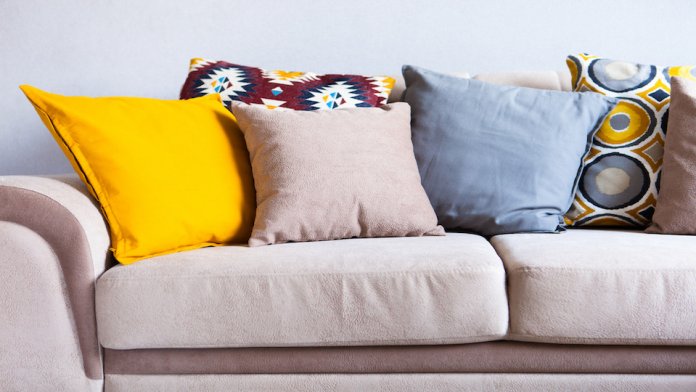Tragically, the average American is exposed to over 200 synthetic (and potentially toxic) chemicals even before they leave the house. They are in our food and water, our personal care products, our “cleaning” products, our clothing, our appliances, and our building materials. And they are “off-gassing” from our furniture into the very air we breathe. This eye-opening piece from my team at UpWellness shines a light on this little-known source of toxic exposure and helps you understand what you can do to minimize the risks.
-JL
When you buy that couch you have always wanted, you might be getting more than what you asked for including a whole mess of dangerous pollutants. As strange as it seems, your rug, couch, and carpet could be accelerating the aging process within your cells.
New furniture has a price
Getting new furniture is an exciting time but what you don’t know about that furniture might cause you and your family members harm. Hidden in the glues, fabrics, and finishes are a number of dangerous chemicals. These include flame retardants, laminates, polishes, and other seemingly “harmless” ingredients. Sadly, what it often boils down to is that you are paying to bring dangerous and often toxic chemicals into your own home.
Dangerous compounds pollute the air
Dangerous chemicals from your rugs and furniture seep into the air and can cause all sorts of nasty things to happen when they are inhaled. This includes this like eye, nose and throat irritation, loss of coordination, nausea, and headaches. In addition, pollutants in your home can disrupt liver and kidney function, harm the nervous system and even cause cancer.
These environmental toxins hasten aging
Environmental toxins found in common household items include copper, perfluorohexane sulfonic acid (PFHxS) and perfluorooctanesulfonic acid (PFOS) . These compounds enter the human body via air, food, and skin contact. Once inside the body, they wreak havoc on cells.
Copper is often used in household wires and ends up being recirculated into the environment when they are thrown out and incinerated. PFOS and PFHxS are members of a group known as perfluorinated chemicals which are highly dangerous compounds that can contaminate groundwater. PFOS was once a significant ingredient in Scotchguard. PFHxS chemicals are “used for treatment of textile and furniture to obtain a higher resistance against dirt and have been traced to spray-based treatments for carpets.”
Study findings are disturbing
A new study found that having higher than normal amounts of dangerous environmental toxins in the body has strange impacts on cellular aging. After collecting blood samples of 175 individuals, study leader Michelle Plusquin, Ph.D., found a few very interesting things happening to cells:
Some chemicals, including copper and PFOS, shortened teleomeres, the protective caps on the ends of chromosomes. This negative association is an indication of cellular aging.
Pollutants also had an impact on mitochondria – the powerhouse within cells. The research found that people who had high levels of copper in their urine and PFHxS in their blood, had less mitochondrial DNA (mtDNA). People who had high levels of PFOS had higher levels of mtDNA – which is not a good thing according to Plusquin. It means that there are some serious issues within the cell.
“Mitochondrial DNA content is known to fluctuate, and a higher content might mean that there is a higher need for mitochondria. As mitochondria deliver energy to the cell, they might need more energy due to these exposures.”
What you can do
To combat the host of chemicals found in household furnishing and textiles, you can do the following:
- Use an air purifier – Investing in a high-end air purifier or a PCO cleaner will help keep dangerous pollutants out of your indoor air. PCO cleaners employ UV light to convert gas-based pollutants into harmless compounds while air purifiers take the compounds out of the air completely.
- Get some plants – Not only do houseplants add interest to indoor space, but they are also natural air purifiers. Research shows that a number of plants including English ivy, purple heart, foxtail fern, and wax plant, to name a few, are particularly effective at snatching nasty toxins from the air. It is recommended that you have one plant for every 100 square feet in your home.
- Charcoal air filters – Using a charcoal air filter can help remove dangerous compounds from the air. Charcoal is a known detoxifier and is highly absorbable. Don’t forget to change your household filters frequently
- Let furniture and textiles offload gas outside – When you purchase furniture and household textiles, unwrap them and let them offload their gases in your garage or a shed with lots of ventilation. This will not get rid of all the gases, as it takes up to 6 months for this, but it will help with the initial off-gassing and odor you often smell when you unwrap new furniture.
-The UpWellness Team


